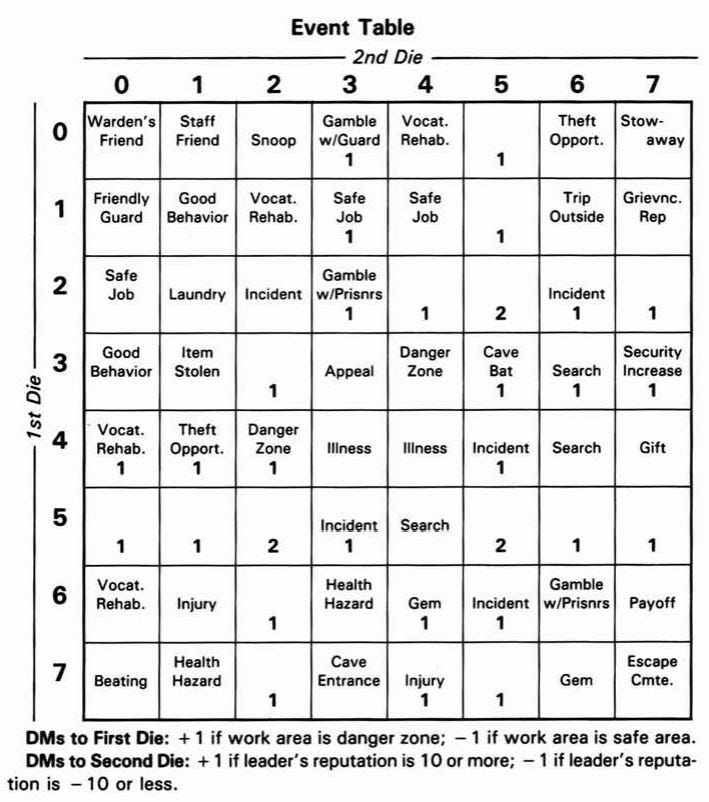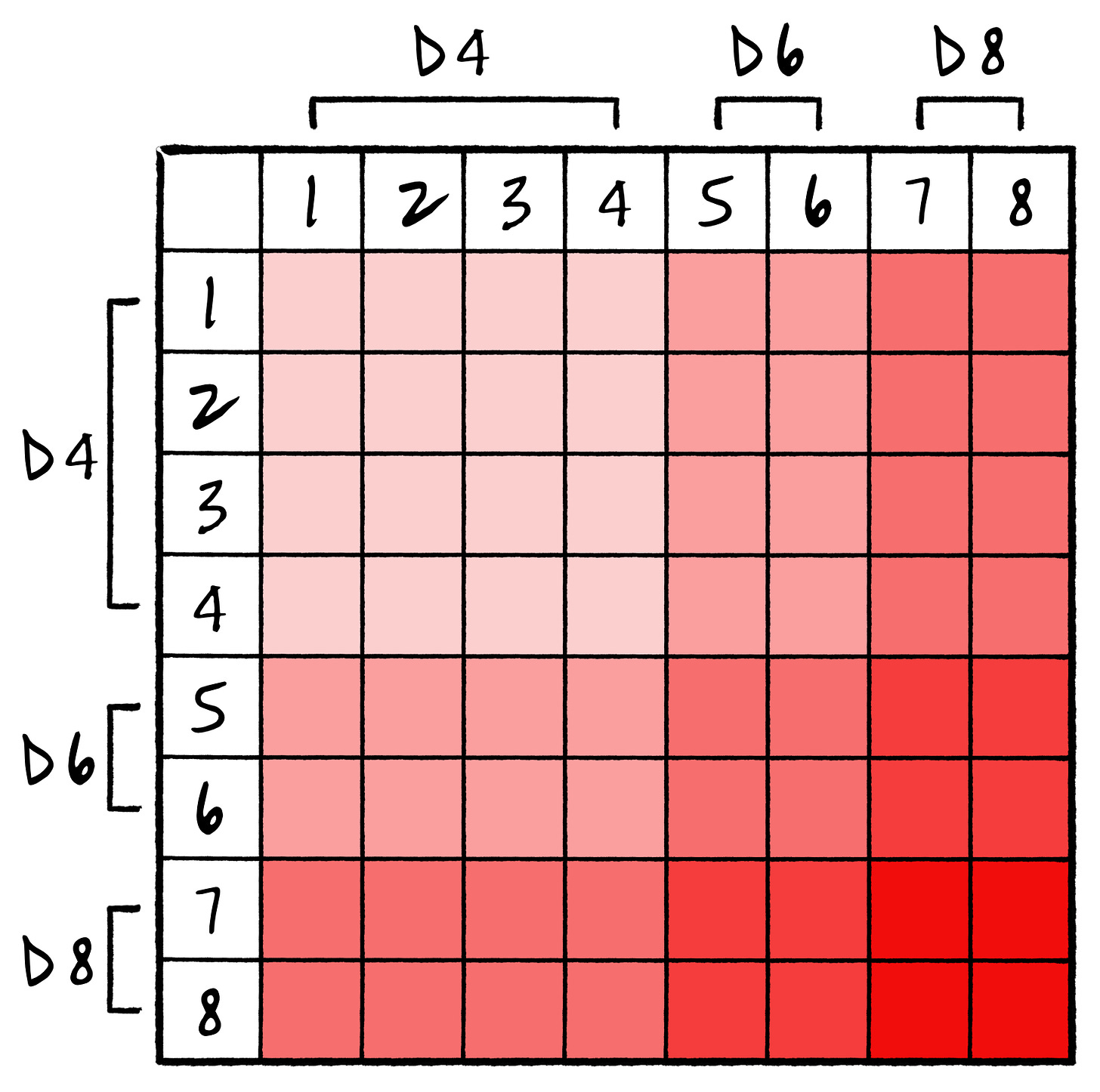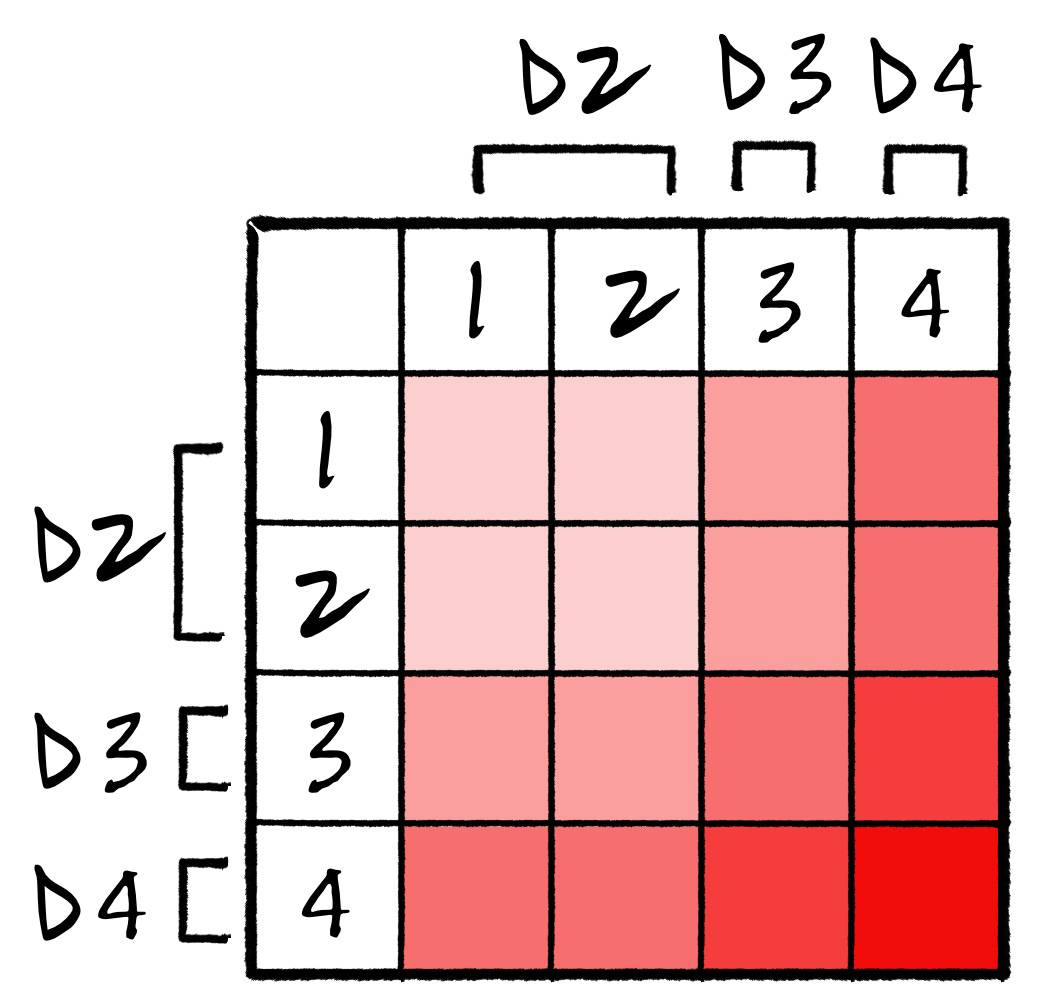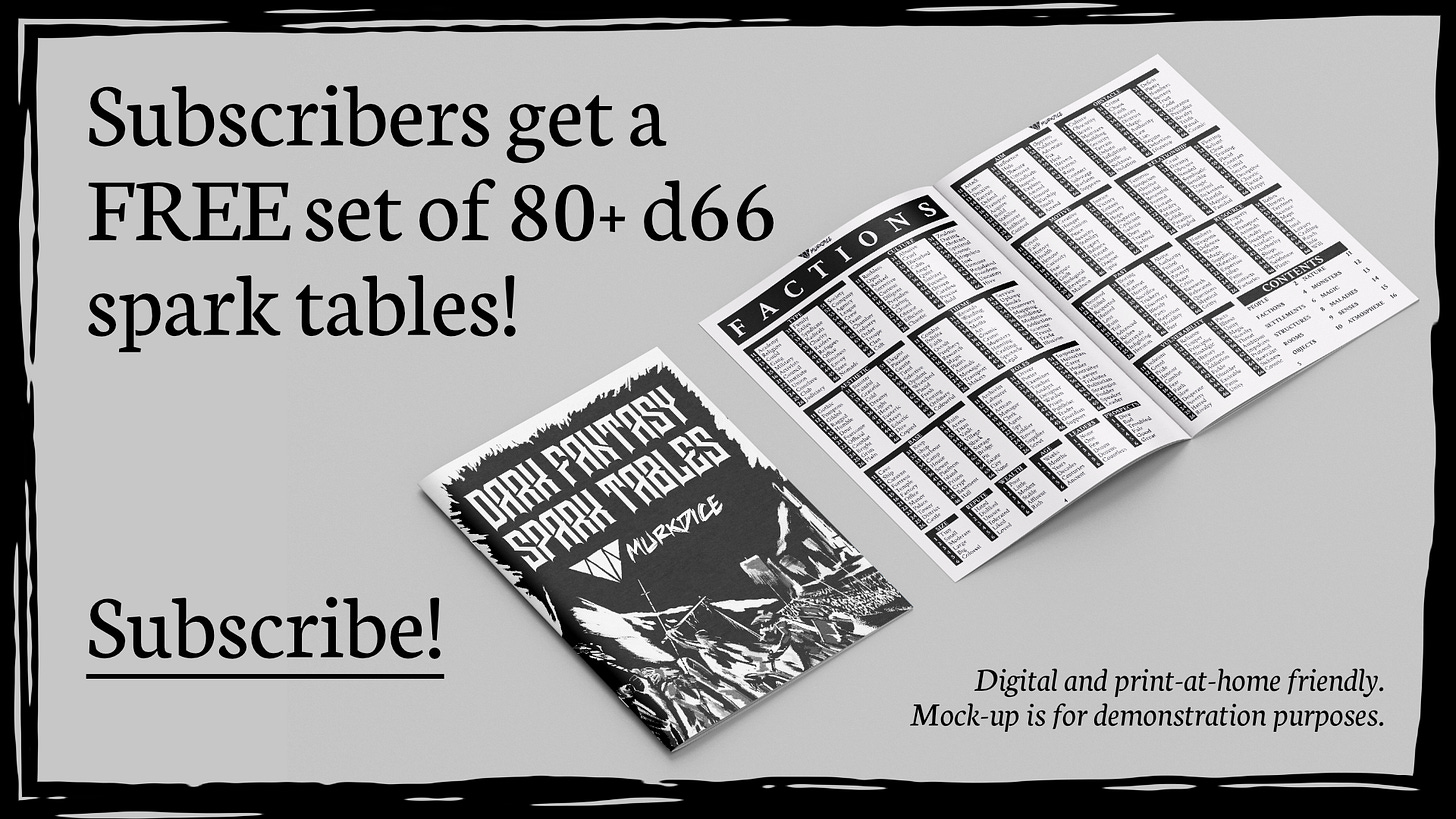Event Matrix Mastery
Dynamic scenario tooling
This article contains affiliate links, meaning I get a commission if you make purchases using these links, at no cost to you.How do we get our adventures and scenarios to evolve beyond simple encounters? Great adventures have tackled this problem in many ways:
Willow uses a timeline structure, lots of great modules use timelines.
A Pound of Flesh has a three track escalation system, this is less of a timeline and more planned escalation that informs the GM.
Mythic Bastionland’s myths feature events that affect the wider world and aren’t directly levied at the PCs.
And of course, there’s Easy Sandbox Evolution too.
These are all great but there is one approach to this problem I consider to be very good which doesn’t get talked about much…
Traveller’s Prison Planet event matrix. I often use it as an example in my articles.
In short, you roll a dice for each ‘axis’ to generate what event happens next. Each axis represents a ‘factor’ that can change, in this case receiving a small modifier to the dice roll. This article shows how I like to put an event matrix together.
I think this is great for Mothership, but works with lots of OSR-y games.
Quick definition. Events are things that happen but that PCs might not directly witness or engage with immediately (as opposed to encounters which are always PC centric). They can be more ‘scenario shifting’, and we usually roll for them less often (maybe once per watch, day, or week).
The matrix
The easy bits:
I tend to use an 8x8 matrix. This gives 64 entries (which is a lot, I know). Number the columns and rows from 1 to 8.
Pick the two most important factors in your scenario. In Traveller’s Prison Planet, this is your leader’s reputation and how dangerous the part of the facility you are in is.
We’re going to roll for events using a step dice chain. That just means that the two factors are each going to be represented by a die, and that die changes size depending on how prevalent that factor is.
The factors have three threat levels: minor (d4), major (d6), severe (d8).
Let’s look at this on a diagram, to see it mapped out.
The diagram above is a ‘heat map’. The entries in the lightest shade, under d4 on both axes are the least severe events. Entries in the darkest shaded area under d8 on both axes are the most severe events.
This is an 8x8 example, but you can also use a step dice chain of d2, d3, d4 if you want to work with a 4x4 grid, which is good for smaller scenarios:
And of course, you can experiment with other step dice chains and grid sizes e.g. you can use d2, d4, d6 for a 6x6 grid too.
Threat level shifts
When do you change the threat levels (i.e. increase or decrease the die size)? One way is good ‘ol GM judgement.
If you want your threat level more dynamic though, build threat level changes into the events.
Ventilation Rupture: A rupture occurs in the ventilation system. All PCs make a Body save or gain 1 Stress. Raise the ‘malfunctions’ threat level by one step.
The number of events which feature these changes, and the ratio of increases to decreases, is up to you:
More threat level changes in general will make a situation feel more chaotic.
More increase events than decreases gives a feeling of catastrophe.
More decrease events than increases gives a sense of status quo.
Alter the threat level if the PCs do something that would change it. In the example event above, you can derive that if PCs fix the rupture, the threat level might decrease (depending on how many other malfunctions are happening).
Making events
Because these events don’t follow a set sequence, you need your event entries to be flexible and potentially reusable. They need to not care what order they happen in. Our Ventilation Rupture example above can happen any time, any place, and it doesn’t break if it gets rolled multiple times.
Having some events that are one offs isn’t so bad if:
Your scenario is small enough that you can simply cross them out when used and can re-roll without concern of running out.
You don’t put too many of them in so you can re-roll to get entries that work as recurrences without issue.
Use the threat levels to guide your entries. Imagine we have two factors for a space station adventure: malfunctions and panic. Malfunctions is all about the space station having technical issues and panic is about the crew’s mindset.
It’s clear what events we should put in the chart for the zone with malfunctions at d8 and panic at d4: we expect serious malfunctions that are mitigated or lessened by NPC crew actions. If we had malfunctions at d4 and panic at d8, the NPC crew is freaking out about stuff they could fix if they hadn’t lost their cool.
The benefits
I like an event matrix because:
They are dynamic (threat levels change) and have two factors at play. This makes for an evolving and gameable situation.
They help you think about interactions between the two most important factors in your scenario.
They automate making a scenario complex and having lots of moving parts.
Try using one!
If you like MurkMail, I share my freshest rpg-y thoughts in MurkMail Premium. Join MurkMail Premium (get a 7-day free trial).







Good read! Might try to throw this into something in the future- I like the concept. I wonder how it maths out for the likelihood of getting those increasing threat events and how you could work something into the system to help ensure the higher level threats come up more often as you go.
Maybe replace certain squares as the threat level increases with (↓) or (→) to move on to bigger events as the size increases.
Perfect timing! I'm working on creating creature specific events that will greatly depend on how much you've pissed off or appeased the creature.